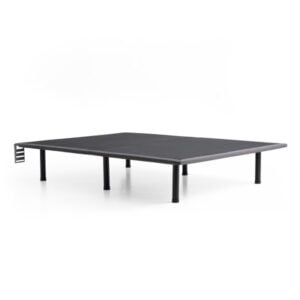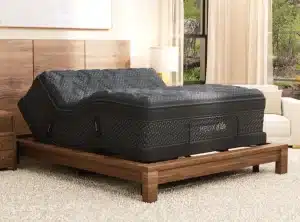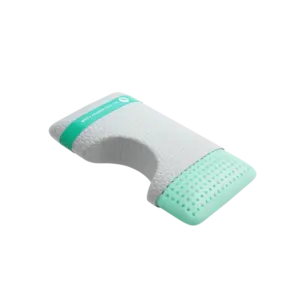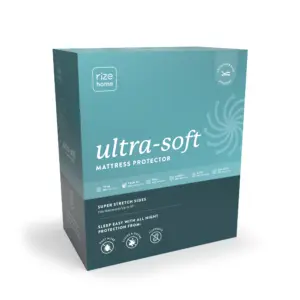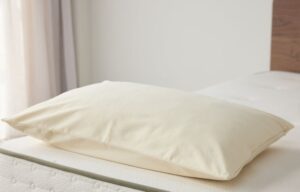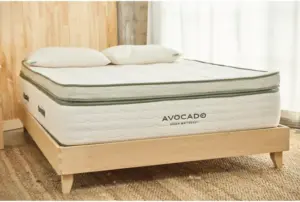The Ins and Outs of Hybrid vs. Innerspring Mattresses
When it comes to choosing a mattress, understanding the differences between hybrid and innerspring options is crucial for making an informed decision. Both types have their unique advantages, and addressing your specific sleep needs can elevate your overall well-being. This comprehensive guide will explore the components, pros and cons, and ideal users of both hybrid and innerspring mattresses, ensuring you can find the perfect fit for your sleep style.
What is a Hybrid Mattress?
A hybrid mattress combines the support of traditional coils with the comfort of foam or latex, offering a blend that caters to diverse sleepers. Let’s delve deeper into its components, advantages, and disadvantages.
Components of a Hybrid Mattress
Hybrid mattresses consist of several layers, each serving a distinct purpose:
1. Comfort Layer: The top layer is typically made of memory foam or latex, offering plush cushioning that conforms to your body and provides pressure relief.
2. Transition Layer: Positioned beneath the comfort layer, this layer often utilizes firm poly-foam to reduce pressure while enhancing durability.
3. Support Layer: At the core lies the coil system, which is usually composed of pocket coils. These coils are individually wrapped, minimizing motion transfer while offering targeted support.
4. Base Layer: This high-density poly-foam layer ensures stability and absorbs shock, contributing to the overall support of the mattress.
Pros and Cons of Hybrid Mattresses
Pros:
– Balanced Support: Hybrids combine bounce and contouring, accommodating various sleeping positions.
– Superior Motion Isolation: The combination of foam and pocket coils minimizes disruptions, making them ideal for couples.
– Enhanced Durability: High-quality materials and robust construction often result in longer lifespans and extended warranties.
– Temperature Regulation: Improved airflow and cooling technologies keep you comfortable throughout the night.
Cons:
– Cost: The use of multiple materials and complex designs typically makes hybrids more expensive than innersprings.
– Weight: Heavier construction can complicate moving or adjusting your mattress.
– Heat Retention: Despite cooling features, some hybrids may trap heat, posing a challenge for particularly hot sleepers.
– Sagging Potential: Over time, lower-quality hybrids might experience sagging due to decreased coil tension.
For those considering a hybrid mattress, opting for high-quality options can yield long-lasting comfort and support.
What is an Innerspring Mattress?
Innerspring mattresses represent a classic choice with a core support system comprised primarily of steel coils. They often come equipped with a comfort layer for added cushioning. Here’s a deeper examination of their components and characteristics.
Components of an Innerspring Mattress
1. Comfort Layer: This thinner layer (generally 1 to 3 inches) is crafted from natural fibers, foam, or latex, contributing to the overall comfort but offering less contouring compared to hybrids.
2. Support Layer: The support layer features various types of coils:
– Bonnell Coils: Hourglass-shaped and interconnected; durable but have high motion transfer.
– Offset Coils: Similar to Bonnell but with improved support; however, motion isolation remains an issue.
– Continuous Coils: Formed from a single wire, providing strength but can be noisy.
– Pocket Coils: Individually wrapped to excel at reducing motion transfer and providing targeted support.
3. Pillow Top: Some models feature an additional layer of padding sewn into the cover for enhanced comfort.
Pros and Cons of Innerspring Mattresses
Pros:
– Affordability: Generally, innerspring options are less expensive, with numerous options available under $1,000.
– Airflow: Excellent breathability keeps your sleep environment cooler.
– Responsive Feel: Their bouncy nature often feels like sleeping on top of the mattress, especially beneficial for stomach sleepers and those who prefer a firmer feel.
Cons:
– Motion Transfer: Coils can transfer motion, making it a less ideal choice for couples.
– Limited Pressure Relief: Thinner comfort layers may not contour sufficiently for side sleepers or those with joint pain.
– Noise: With time, lower-quality models may produce noise due to coil wear.
– Sagging Risk: Decreased coil tension can result in sagging over time.
Innerspring mattresses are excellent for those seeking a traditional feel combined with affordability.
Hybrid vs. Innerspring Mattress: Key Differences
Navigating the choice between hybrid and innerspring options involves understanding their distinct differences:
Comfort & Support
– Innerspring Mattresses: Typically provide a firmer sleep surface that is responsive, making this type preferable for stomach sleepers and individuals needing extra support.
– Hybrid Mattresses: Offer balanced support with a mix of bounce and pressure relief, making them suitable for back and side sleepers who desire cushioning.
Motion Isolation
– Innerspring Mattresses: Traditional designs often transfer more motion, which could be disruptive for couples.
– Hybrid Mattresses: Excelling in motion isolation, hybrids minimize disturbances, making them ideal for light sleepers.
Temperature Control
– Innerspring Mattresses: Feature excellent airflow and minimal padding, promoting a cooler sleep experience.
– Hybrid Mattresses: While they generally sleep cooler than all-foam models, some hybrids may still retain heat. However, many incorporate cooling technologies for improved airflow.
Durability
– Innerspring Mattresses: High-quality models can last significantly longer, typically depending on coil type.
– Hybrid Mattresses: Quality varies, but premium hybrids can offer longevity, whereas lower-quality options may sag over time.
Price Comparison
– Innerspring Mattresses: Often the more budget-friendly choice, providing value without sacrificing support.
– Hybrid Mattresses: Typically priced higher due to their complexity and materials, but the investment can yield better comfort and support long-term.
Who Should Choose a Hybrid or Innerspring Mattress?
Who Should Choose a Hybrid Mattress?
– Side Sleepers: Benefit from contouring comfort layers that alleviate pressure on hips and shoulders.
– Back Sleepers: Appreciate the medium-firm support that maintains spinal alignment.
– Stomach Sleepers: Can find supportive options that prevent excessive sinking.
– Combination Sleepers: The resilience of hybrids makes switching positions effortless.
– Hot Sleepers: Enjoy better airflow and temperature regulation with hybrids featuring cooling technologies.
– Couples: The motion isolation capabilities are ideal for maintaining undisturbed sleep.
Who Should Choose an Innerspring Mattress?
– Plus-Size Sleepers: Require robust support which innersprings can provide with their coil systems.
– Stomach Sleepers: Prefer the firmer support to avoid misalignment.
– Hot Sleepers: Enjoy excellent airflow, keeping sleep conditions cool.
– Budget-Conscious Shoppers: Find affordable options without compromising support and durability.
Frequently Asked Questions about Hybrid vs. Innerspring Mattresses
Is a Hybrid or Innerspring Mattress Better for Back Pain?
Hybrid mattresses often provide superior support and contouring, making them a better choice for many experiencing back pain. Innerspring mattresses do offer firmer support, but lack the contouring that hybrid designs provide.
Do Hybrid Mattresses Need a Box Spring?
While hybrids do not require a box spring, they can be used with various bed foundations. A solid foundation is essential to maintain mattress integrity.
Why Do Hotels Use Innerspring Mattresses?
Hotels favor innerspring mattresses for their durability, affordability, and broad appeal, ensuring a reliable and comfortable experience for diverse guests.
Conclusion
Choosing between hybrid and innerspring mattresses can significantly affect your sleep quality. Hybrid mattresses excel in comfort, motion isolation, and temperature control, making them suitable for many individuals. In contrast, innerspring mattresses offer firmer support and affordability, appealing to those who prefer a traditional feel.
Ultimately, your sleep needs and preferences will guide the best choice between these two types. For personalized recommendations, consider exploring Yawnder’s expertise through our SleepMatch Quiz or visiting our showroom to experience the options firsthand. Start your journey to better sleep today!


